For Part One of this paper see – bit.ly/2wTVkmp
- Thomas Youdan (top hat, always centre stage) shortly after his Surrey Street Theatre had burnt down in 1865
There may well have been talk with the clubs regarding a share of any monies derived from the competition. According to news reports, there was a weekly fund to support players who had been injured in the games and could not work. One player, having been injured during the competition, was awarded five shillings. Harvey talks of an accident fund that the players had paid into giving them eight shillings a week when injury rendered them unfit for work. This was almost certainly true for the season commencing after the competition had ended. Harvey was more interested in the working-class connection to even question how such a scheme emerged as a result of the competition. Was this one of the lures? With this in mind, the organisation of games allowed for the following Monday to stage replays in the event of a tie. This actually happened between Hallam and Norfolk clubs after their second round game was tied. It could well be argued that at the time ‘Saint Monday’ (taking Monday off as an unofficial holiday) was still strong in Sheffield working culture. Nevertheless, it would have had the approval from all concerned as the competition block adverts had stressed that only the best players from each club were involved. Had the clubs agreed to ‘broken-time’ payments to stage such games? Naivety could well have played its part, as the issue surrounding veiled professionalism was some time away. Sheffield may well have achieved another first in the game! According to Westby, the vast sum of £70 (£8,000 by today’s standards) was reported stolen from the offices of Thomas Youdan after the competition had ended; and that this money was raised during the tournament. The reports in the local press clearly show that a theft did indeed take place, but on the evening of March 1st. This was well before gate monies had been taken for the final on 5th March and the second placed game on the 9th. There was no mention of monies linked with football. How had the organising committee arranged for funding regarding the injured players and what happened to the eventual gate money which Harvey says amounted to £50? There is the possibility that the clubs paid into a fund prior to the competition, with the provision that any monies raised would find its way back to the clubs.
- The Sheffield and Rotherham Independent, March 9th 1867
It is worthwhile here to consider the issue surrounding the establishment of the Sheffield Football Players’ Accident Society. This was most certainly a ‘spin-off’ from the Youdan competition. It appears that injuries were more frequent and common during the playing of the tournament games. Was this again indicative that a new set of rules applied? The Battersea Park game was noted for its physicality due in essence to the rules under which the London Association played. This would have led in turn to a game of attrition between the two sets of forward players. Injuries were inevitable. This seems to have been highlighted in a report in the Sheffield and Rotherham Independent, March 4th, entitled The Youdan Football Cup:
‘The Mackenzie and Hallam football clubs competed for this prize at Bramall lane [sic] on Saturday, and some good play was the result, although it was evident from the commencement that Hallam had the advantage, their side being a much more bulky specimen of humanity than their opponents.’
The reporter seems to have confused his rouges and goals regarding the result, however, he makes another very interesting comment regarding the game:
‘Hallam certainly showed the best play but there was far too much playing the men instead of the ball, as there generally is in these matches thus giving the advantage to heavy rough over the lighter players.’
What did the reporter mean by ‘these matches’? Did he mean football in general, or the games played in the Youdan competition under London rules? The committee had obviously put a framework together to encourage participation from the outset which appeared to include some sort of guarantee for player welfare. A benefit society for players came into its own during the following season under the Sheffield Football Association. There were reports that players were contributing to this fund through their clubs but the monies available were obviously not enough for the amount of claims. Fund raising events had to be staged to supplement the benefits. Thomas Youdan assisted with this through evenings at Alexandra Music Hall dedicated to the fund, as well as a Town v County football match staged at Bramall Lane. By the end of the 1869 season it seems that funding for injured players was discontinued. Whilst this was the first of its kind to emerge regarding player welfare, it would be burdened with difficulties regarding monies. False claims aside, the possible notion of ‘veiled’ professionalism would not have helped.
Efforts to maintain the accident benefit fund for injured players after the Youdan competition. Top – The Sheffield Daily Telegraph April 23rd 1868. Left – The Sheffield and Rotherham Independent December 8th 1869. Right – Bell’s Life in London December 7th 1867
Various sources – Westby, Harvey and Murphy – have claimed that the competition was not a true knock-out tournament, as the Norfolk club achieved a bye to the final and claims were made that it then became a three-way competition between these clubs. This is not true. It was a knock-out competition throughout: the world’s first. Only after the final did the committee agree to a second place game, most likely because the final had attracted a crowd of over three thousand, charged 3d each (ladies free). The first round of games started on Saturday 16th February 1867, and the second round games on Saturday 23rd. Percy Young (Football in Sheffield) suggests that Chesterman travelled to London on February 12th to try and amend certain rules to fit in with the Sheffield style of play. He was unsuccessful. Was this a last ditch attempt to alter the competition rules to suit Sheffield before it kicked off? Young states that the reception to these proposals was recorded in the F.A. minute book. Brown, however, states that the meeting did not take place until the 26th February (again, in the minute book). Chesterman was present and a letter was read out from Chambers of the Sheffield Football Association, who was now its President.
‘Mr Robert Willis, the hon. sec, read several letters from gentlemen connected with the Association. One from Mr Chambers of the Sheffield Association stated that the association represented 14 clubs and 1,000 or 1,200 members and whatever was done that evening by the meeting would receive every attention at the hands of the Sheffield players.’
At some point before the commencement of games in the Youdan competition an association of clubs had emerged. Westby suggests that the association had formed in January of 1867. This could well be the case as it was undoubtedly formed to oversee the commencement of the Youdan Competition. The February London meeting was the watershed of F.A. fortunes. The representation at the meeting had dwindled to six clubs and it is said that Morley considered disbanding. The Sheffield letter had its impact, although not it seems regarding Sheffield’s proposals for rule amendments! The final of the competition was played on March 5th, with the Hallam club victorious and the second placed game on the 9th. A report in the Sportsman newspaper, of which Charles Alcock was a journalist, ran a report on March 14th entitled Sheffield Football Association. It claimed that on March 6th, the day after the Youdan Final, a meeting took place at the Adelphi Hotel to discuss the rules. This was a second meeting following an adjourned meeting held before. This was to give clubs time to consider the rules and put forward amendments. It appears that at this prior meeting, it was proposed to accept the London rules. This obviously met with some resistance from the clubs. Because the London Association had rejected Sheffield amendments to the rules earlier, Chesterman and Chambers had no option but to accept the 1867 London rules.
Brown quotes Chesterman in his book regarding the outcome of the February 26th meeting held in London:
‘Mr Chesterman said the alterations the Sheffield men proposed were not of much consequence, as they would be guided by the results of that night’s deliberations, giving all their attention to the superior alterations that the London representatives might make’.
On March 11th the Sheffield and Rotherham Independent reported under the heading of ‘Football’:
‘The return match between London and Sheffield is fixed for Saturday April 6th at Sheffield. The following are the rules of the Association for the season 1867-8, revised and corrected from the late alterations’.
The rules were those of the London Football Association in their entirety.
On Thursday 14th March, The Sportsman reported under the heading of Sheffield Football Association the following:
‘The adjourned meeting of this association was held on Wednesday evening, 6th inst., at the Adelphi Hotel. H. W. Chambers Esq. (President), in the Chair. The meeting was numerously attended, thirteen clubs being represented. The minutes of the previous meeting being read over and confirmed, the election of a committee was proceeded with. One representative from each club was elected, so as to give all an equal voice. This business having been disposed of, the meeting proceeded to form a code of laws. The laws of the General Association as settled at the last meeting were in each case taken as the proposition, and the laws of the game, as played in Sheffield, were moved as the amendments.’
There was a similar report to this in the Sporting Life the day before. Both papers reported on the adjourned meeting. This meeting must have taken place before the end of the Youdan competition and whilst the clubs may have had representatives, it appears that this meeting confirmed that the Sheffield clubs would play to the London Association (General Association) rules. This could have led to the report in The Sheffield and Rotherham Independent. Harvey says that the embryonic Sheffield Football Association showed interest in adopting the laws of the London Association. This was an understatement. The Sheffield men were desperate to force the issue. It seems, however, that the clubs were not happy with this and demanded another meeting to give time to consider the rules and to have an official voice in proceedings. The rules were duly amended according to club wishes although both reports say that voting was a close run thing. This would explain why a return match against London had been arranged and was going ahead until the revised laws took shape. London would only play by their rules and so the game did not take place. Sheffield now had its own association of clubs, on a larger scale than London, which could determine its own direction within a democratic model. Chambers and Chesterman must have despaired!
-
Block advert in the The Sheffield Daily Telegraph, Saturday March 9th 1867
Which rules?
Conclusion
The Youdan Cup Competition deserves its place in football history. Not only the world’s first knock-out tournament of its kind, pre-dating the Football Association Challenge Cup by four years, but also the galvanising force that helped put together the first provincial association in the country. Both these elements were a significant part of the complex set of circumstances that ultimately helped shape and put together the modern game. The interactions of individuals, their different agendas and ensuing power struggles makes this ‘men made’ set of circumstances worthy of scrutiny. Since the founding of the Sheffield Club it appears that their hierarchy were keen on incorporating rules used to govern the games played by their social superiors. This lends itself to suggestions in my last article, that the original game in Sheffield was not a product of Collegiate College but an imported version from the backwaters of Penistone. Why would the club wish to change, almost immediately, the way the game was played if it was their own? Rules from the Eton Field Game and of Rugby School were brought in so that the Sheffield game might gain respectability. Collins (How Football Began) points out that ‘emulation of their social superiors has long been a defining characteristic of the British middle classes and the Sheffield footballers were no exception’. When the London Association was formed, the Sheffield Club was obviously enamoured at the thought of enhancing this stance even further. By becoming members in December 1863 they committed themselves to promoting the London cause and, despite their best efforts, to influence the development of the rules three years later; they bowed to the collective and social superiority of London. The 1866 game at Battersea Park was more than just the Football Association’s first representative match. It heralded the beginnings of a concerted effort on behalf of the Sheffield Club to reconcile the differences between how the game was played. Graham Curry (Football: A Study in Diffusion) talks of ‘localism’ giving way to ‘universalism’ and states that both sides eventually would accept compromise, albeit more on London’s terms! The compromise was many years away, and if we are to believe Young’s assertion that ‘it would ill become them as law-makers to sanction a team of theirs playing other rules’, then London was in the ascendency. Sheffield needed to ensure that the metropolitan rules were understood, and more importantly accepted by the local teams. This was the purpose of the Youdan Cup competition, a narrow window of opportunity involving all the Sheffield clubs, except Sheffield itself, playing thirteen games in total. The outcome of this was the creation of the Sheffield Football Association. Its formation is unclear but undoubtedly born out of the committee to oversee the competition. Whilst Westby’s assertion that January 1867 might be right, it could be deemed that there was no democratic voice at this point, which is why the London rules were ‘forced’ home. It is probably safe to say that the exact date of founding is 6th March 1867, when the club representatives were elected onto the committee and the rule structures debated and amended. Chambers did not stay long as President. By 1869 John Charles Shaw had become President and would hold the Chair for fourteen years, overseeing rule changes and the eventual amalgamation with London in 1877. Chesterman remained on the FA committee. The Youdan competition was not held again, most likely because its purpose had been served. Its sister trophy, the Cromwell Cup, played the next year and involving four clubs was again, only played the once. If Matthew Taylor (The Association Game) is to be believed when he says, ‘crucial to the growth and survival of clubs and associations was the development of cup competitions’, then the purpose had been fulfilled. Taylor goes on to say that it would be surprising if Charles Alcock had not been inspired by the apparent success of the Youdan competition. An overwhelming piece of evidence to support this lies in the game played in December 1871. Charles Alcock brought a representative side from London to play a Sheffield side at Bramall Lane. The long awaited return match! They played Sheffield rules and were a man short. Shaw stepped in and made up the numbers for London. Harry Walker Chambers was the umpire for London. Alcock played this game against the wishes of the London committee knowing full well that they would be playing a different code. Like the Battersea game, the interesting part is what happened afterwards. Both teams dined at the Adelphi Hotel. This time Alcock, the visiting team captain, undoubtedly was sitting next to Shaw, the President of the host Association. What is most interesting is that in October 1871 the out-of-London representative according to Green failed to be re-elected to the London FA committee. This was William Chesterman. The next year he was replaced by Walter Skinner whom it could be viewed, was John Charles Shaw’s man. By the time Shaw became President of the Association, Skinner was the honorary secretary. Both Chambers and Chesterman were out of the equation. Shaw and Alcock became the driving forces of both Associations. Some men were more important than others. Alcock possibly used the occasion to seek last minute reassurances regarding the framework of the Youdan cup success and his forthcoming FA Challenge Cup competition. The rest, as they say, is history!
Article © Kevin Neill
Acknowledgements
Grateful thanks to the following for their help and support:
Julie-Ann Neill: for her support throughout the completion of this work.
Ian Pitts: for his unstinting work in trawling through the newspaper archives which made this work possible.
Ron Cooper and Alison Barham: for their support with proof-reading. Much appreciated.
Bibliography
Booth K. The Father of Modern Sport: The Life and Times of Charles W. Alcock. Manchester: Parrs Wood Press. 2002
Brown T. The Football Association 1863-1883: A Source Book. Nottingham: Soccerdata. 2011
Collins T. How Football Began. A Global History of How the World’s Football Codes Were Born. Abingdon: Routledge 2019
Curry G. ‘Football: A Study in Diffusion’ Unpublished PhD thesis. University of Leicester. 2001
Curry G. And Dunning E. Association Football: A study in Figurational Sociology. Abingdon: Routledge. 2015
Green G. The History of the Football Association. The Naldrett Press: London. 1953
Harvey A. Football: The First Hundred Years: The Untold Story. Abingdon: Routledge 2005
Hughes T. Tom Brown’s Schooldays: By An Old Boy. London: J. Nisbet and Co. 1903
Macrory J. Running With The Ball: The Birth of Rugby Football. Collins Willow: London 1991
Neill K. John Charles Shaw 1830-1918: The Origins Debate and His Untold Story. www.playingpasts.co.uk
Steele J. A. The Countrymen: The History of Hallam Football Club. Sheffield: JB Printing 2010
Taylor M. The Association Game: A History of British Football. Pearson Longman. 2008
Young P. Football in Sheffield. The Sportsmans Book Club. London. 1964
Newspapers
Bell’s Life in London December 7th 1867
Supplement to the Sheffield and Rotherham Independent March 2nd / March 9th 1867
The Sheffield Daily Telegraph February 2nd /February 6th /February 16th /March 2nd /March 4th / March 5th / March 6th/ March 7th / March 9th / March 12th 1867. April 18th / April 23rd 1868
The Sheffield and Rotherham Independent February 16th /February 23rd /February 25th /February 28th /March 2nd/March 4th /March 5th/March 9th/March 11th/April 20th 1867. December 8th 1869
The Sporting Life March 13th 1867
The Sportsman March 14th 1867
Weekly Supplement to the Sheffield Daily Telegraph February 23rd /March 2nd/March 16th/ November 30th 1867
Podcasts
Collins T. Rugby Reloaded number 43. Ebenezer Morley and the Birth of the FA. January 2019
Collins T. Rugby Reloaded number 52. A Short History of the Scrum. March 2019

![The Youdan Cup Competition 1867 ~ A Fresh Perspective! [Part 2]](https://www.playingpasts.co.uk/wp-content/uploads/2019/06/youdan2-1024x640.jpg)
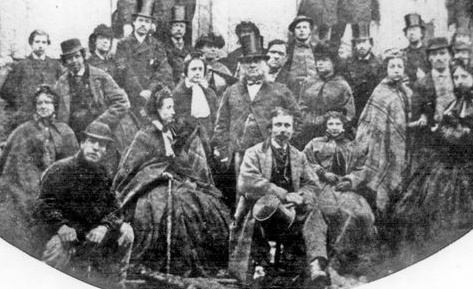
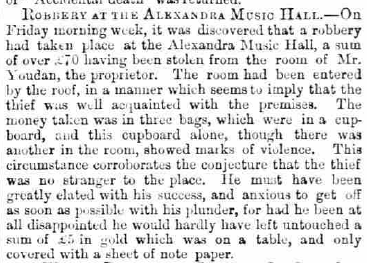
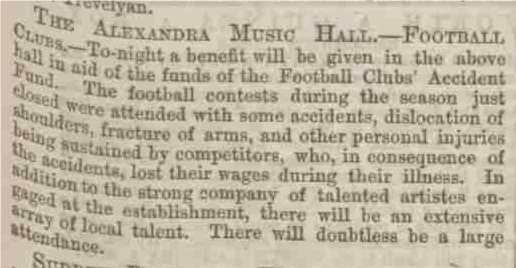
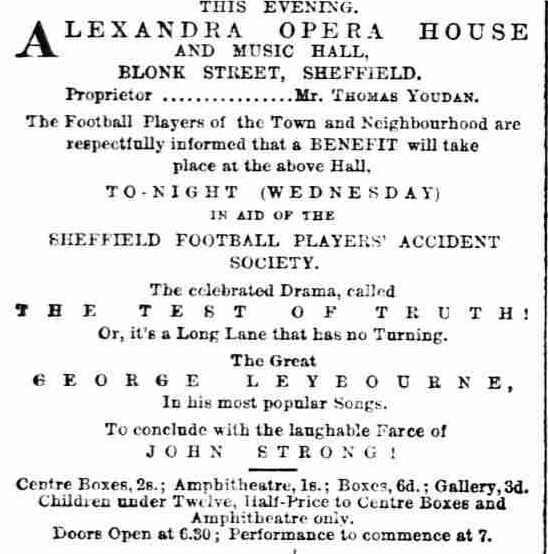
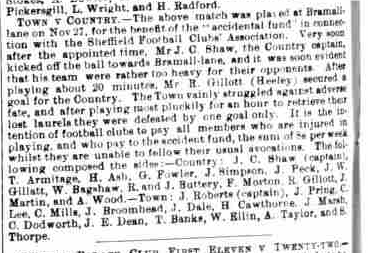

![The Case of Italy v England [1976], Which Was Not Broadcast Live on Italian TV to Fight Workplace Absenteeism](https://www.playingpasts.co.uk/wp-content/uploads/2019/11/PP-banner-maker-6-440x264.jpg)
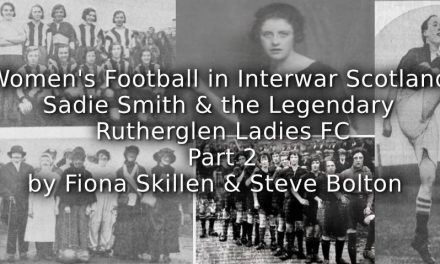
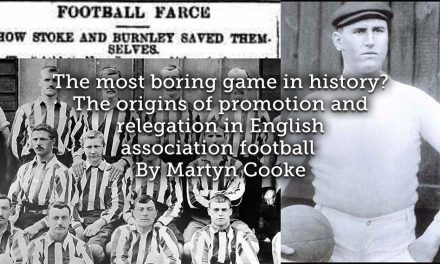
![“And then we were boycotted” <br> New discoveries about the birth of women’s football in Italy [1933] <br> Part 5](https://www.playingpasts.co.uk/wp-content/uploads/2020/03/PP-banner-maker-3-440x264.jpg)